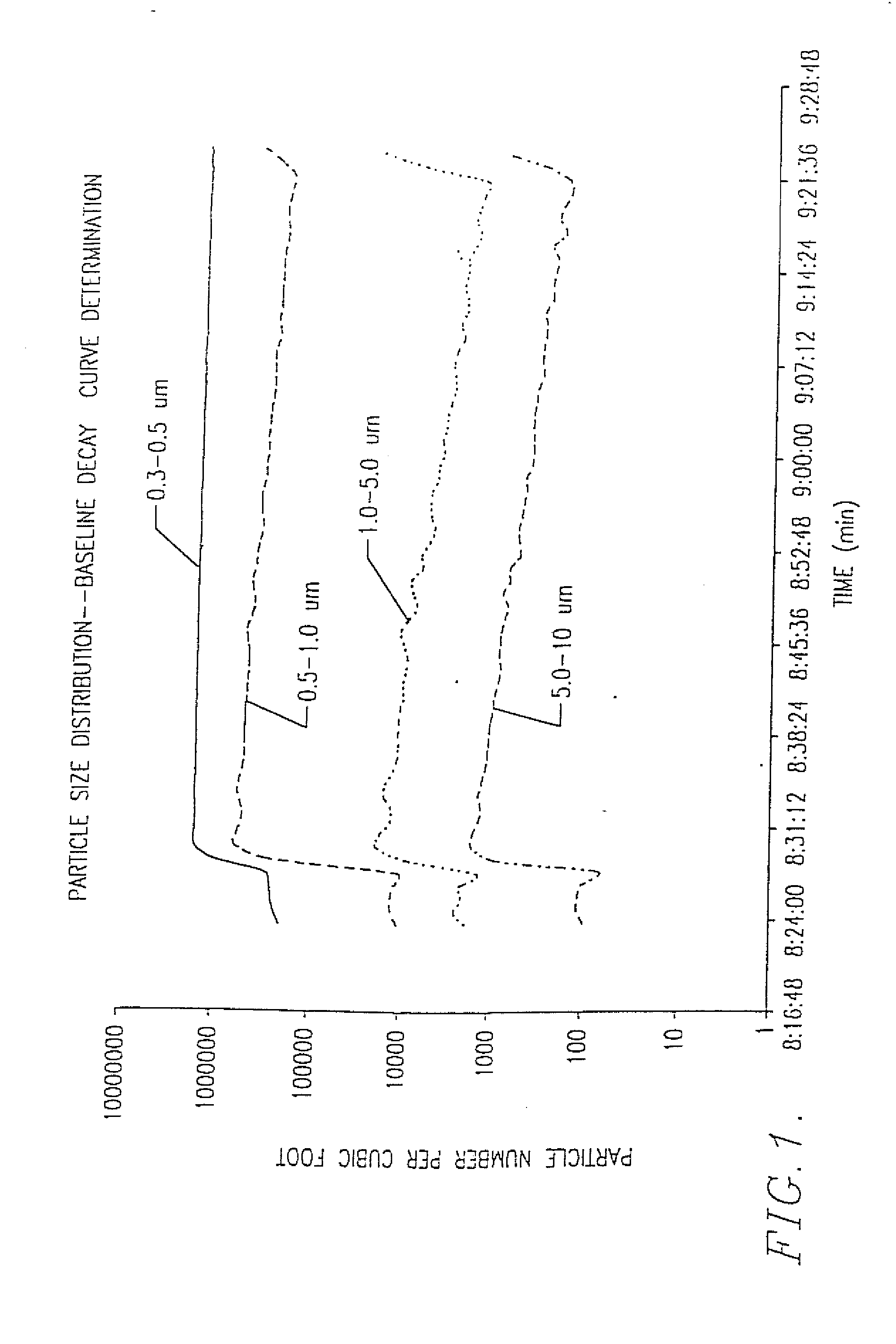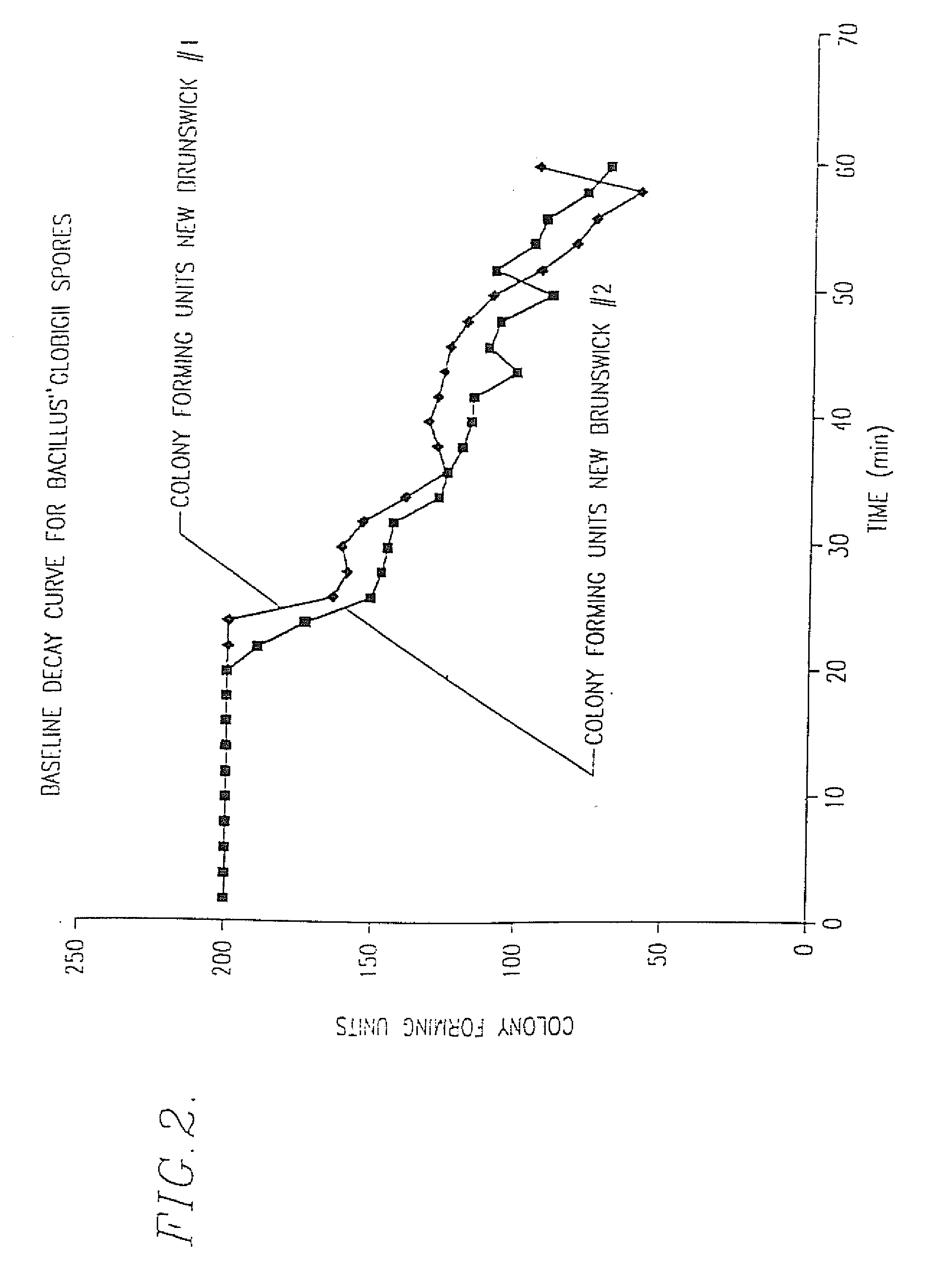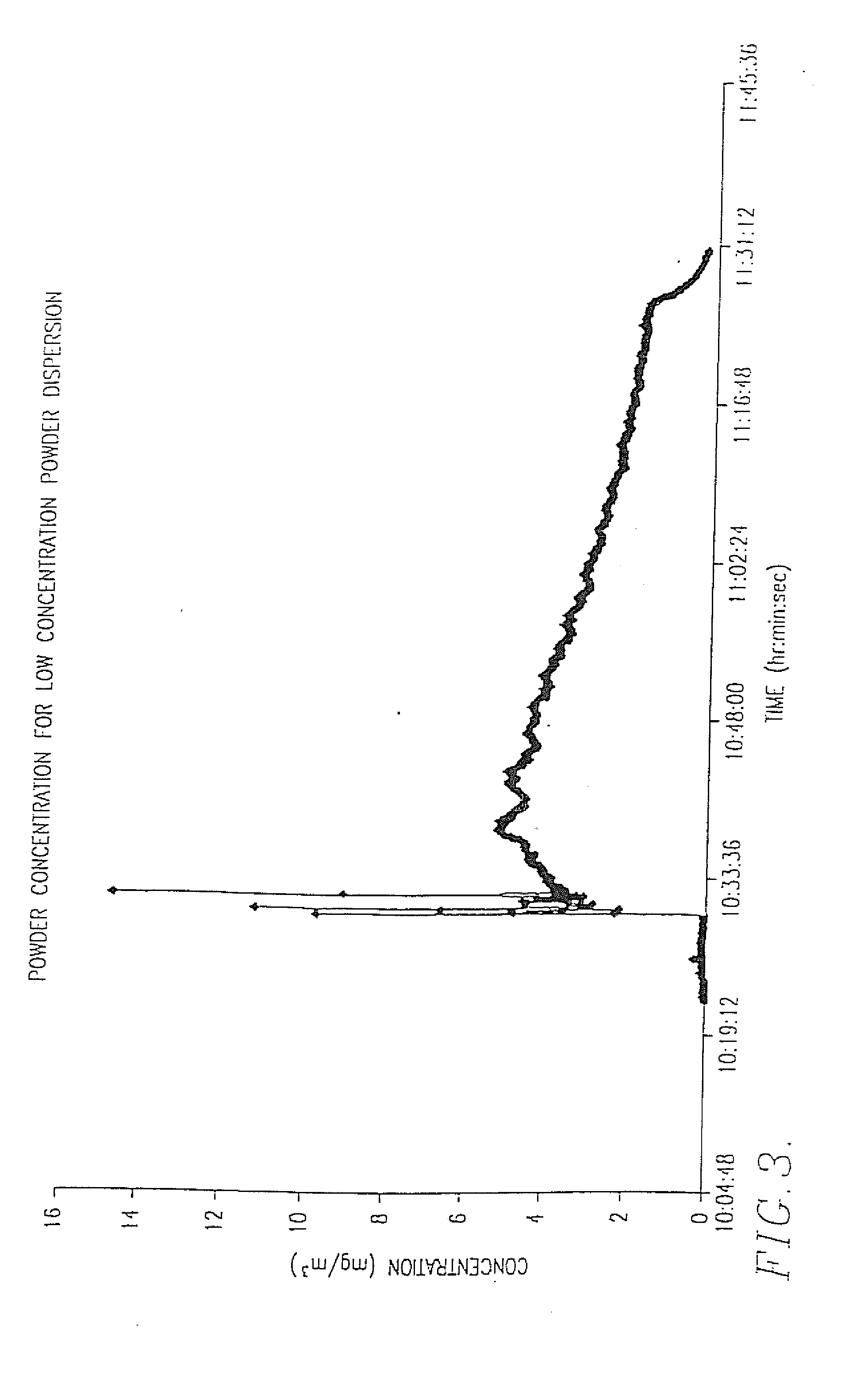Reactive nanoparticles as destructive adsorbents for biological and chemical contamination
a biological and chemical contamination and reactive nanoparticle technology, applied in the direction of metal/metal-oxide/metal-hydroxide catalysts, drug compositions, disinfection, etc., can solve the problems of affecting the health of patients, nerve agents are particularly toxic, and are generally colorless, so as to achieve effective airborne decontamination of chemical agents
- Summary
- Abstract
- Description
- Claims
- Application Information
AI Technical Summary
Benefits of technology
Problems solved by technology
Method used
Image
Examples
example 1
Preparation of MgO Samples
1. AP-MgO
[0038] Highly divided nanocrystalline Mg(OH), samples were prepared by the autoclave treatment described by Utamapanya et al., Chem. Mater., 3:175-181 (1991), incorporated by reference herein. In this procedure, 10% by weight magnesium methoxide in methanol solution was prepared and 83% by weight toluene solvent was added. The solution was then hydrolyzed by addition of 0.75% by weight water dropwise while the solution was stirred and covered with aluminum foil to avoid evaporation. To ensure completion of the reaction, the mixture was stirred overnight. This produced a gel which was treated in an autoclave using a glass lined 600 ml capacity Parr miniature reactor. The gel solution was placed within the reactor and flushed for 10 minutes with nitrogen gas, whereupon the reactor was closed and pressurized to 100 psi using the nitrogen gas. The reactor was then heated up to 265° C. over a 4 hour period at a heating rate of 1° C. / min. The temperat...
example 1a
Preparation of AP-CaO and CP-CaO
[0040] AP-CaO was prepared in a manner similar to the preparation of AP-MgO as described in Example 1 with the following exceptions: 8 g. of calcium metal and 230 ml of methanol were allowed to react; and 180 ml of toluene and 1.2 ml of distilled water were added to the 20 g of calcium methoxide obtained.
[0041] AP-CaO (N2 dehydrated) was prepared in a similar manner with the exception that the sample was dehydrated by heating to a temperature of 500° C. while passing N2 gas over the sample. CP-CaO (vacuum dehydrated) was prepared in the same manner as CP-MgO (described in Example 1, Part 2).
example 1b
Preparation of Fe2O3 / MgO Composites
[0042] Mg(OH)2 particles were first thermally converted to MgO, followed by deposition of iron oxide to provide the complete composite. The initial thermal conversion of magnesium hydroxide to MgO was carried out by heating the magnesium hydroxide under dynamic vacuum conditions at an ascending temperature rate to a maximum temperature of 500° C., which was held for 6 hours. Most of the dehydration was found to occur at temperatures between 200° C. and 320° C. IR and x-ray diffraction studies confirm virtually complete conversion of the Mg(OH)2 to MgO.
[0043] Iron oxide was deposited on the nanoscale MgO particles by carrying out a direct reaction between activated MgO and iron III (acetylacetonate)3, in tetrahydrofuran at room temperature under 1 atmosphere of helium.
[0044] In a typical preparation, 0.3 grains of Mg(OH)2 was heated under vacuum (10−3 Torr.) at an ascending temperature rate of 1° C. / min. to 500° C., which was held for 6 hours to ...
PUM
| Property | Measurement | Unit |
|---|---|---|
| crystallite size | aaaaa | aaaaa |
| crystallite size | aaaaa | aaaaa |
| crystallite size | aaaaa | aaaaa |
Abstract
Description
Claims
Application Information
 Login to View More
Login to View More - R&D
- Intellectual Property
- Life Sciences
- Materials
- Tech Scout
- Unparalleled Data Quality
- Higher Quality Content
- 60% Fewer Hallucinations
Browse by: Latest US Patents, China's latest patents, Technical Efficacy Thesaurus, Application Domain, Technology Topic, Popular Technical Reports.
© 2025 PatSnap. All rights reserved.Legal|Privacy policy|Modern Slavery Act Transparency Statement|Sitemap|About US| Contact US: help@patsnap.com



